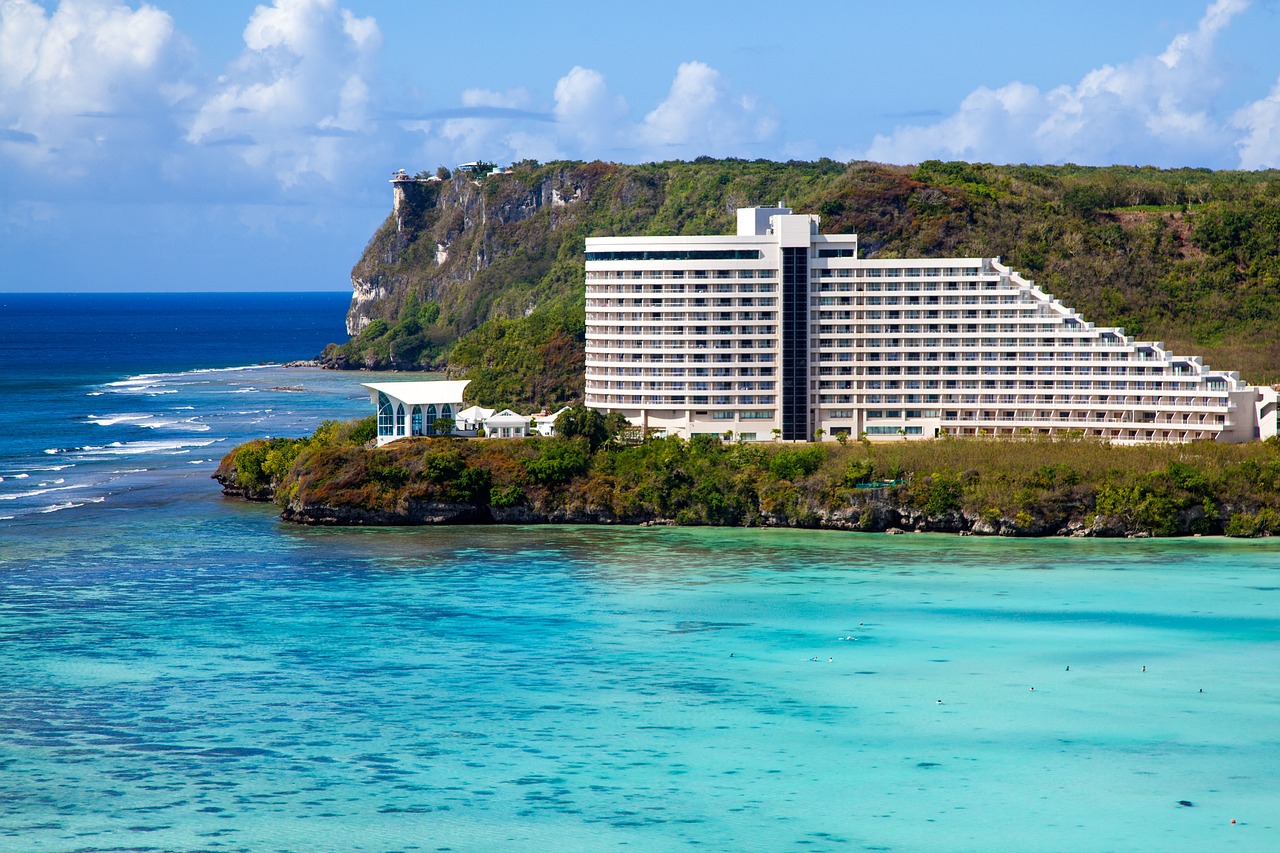Guam Video
Visa and Stay Regulations for Digital Nomads in Guam
Guam, a U.S. territory located in the western Pacific Ocean, is a tropical paradise that has become increasingly popular among digital nomads seeking a unique work and travel experience. With its stunning beaches, rich cultural heritage, and modern amenities, Guam offers an ideal environment for remote work. If you’re considering Guam as your next destination, it’s essential to understand the visa and stay regulations for digital nomads. This article will provide you with a comprehensive guide to help you navigate the requirements and make the most of your stay in Guam.
Guam Image 1:

Section 1: Visa-Free Entry
Guam allows citizens of certain countries to enter without a visa for tourism or business purposes. The visa-free entry program, known as the Guam Visa Waiver Program, grants eligible travelers a stay of up to 45 days. It’s important to note that this program is not specifically designed for digital nomads, and engaging in work activities may not be permitted under this category. However, if you’re planning a short-term visit to explore Guam or attend business meetings, the visa-free entry option can be a convenient choice.
- Eligible Countries: The Guam Visa Waiver Program applies to citizens of Japan, South Korea, Australia, New Zealand, Singapore, Taiwan, and the United Kingdom.
- Requirements: To enter Guam under the visa-free program, travelers must possess a valid passport, a round-trip ticket, and proof of sufficient funds to cover their stay. Additionally, visitors must not have any criminal convictions or previous immigration violations.
- Extension: If you wish to extend your stay beyond the initial 45 days, you will need to apply for a visa or seek alternative visa options that allow longer stays.
Section 2: Visa Options for Digital Nomads
While the visa-free entry program provides a short-term option for digital nomads, those planning to stay longer in Guam or engage in work activities may need to explore other visa options. The following are some visa categories that digital nomads can consider:
- H-1B Specialty Occupation Visa: This visa category is designed for individuals with specialized knowledge or skills. If you have a job offer from a Guam-based employer and meet the criteria, you can apply for an H-1B visa, which allows you to work legally in Guam for the specified period.
- E-2 Treaty Investor Visa: The E-2 visa is available for citizens of countries that have a treaty of commerce and navigation with the United States. If you plan to invest a substantial amount of capital in a business in Guam, this visa allows you to work in your own enterprise.
- L-1 Intracompany Transferee Visa: If you’re already employed by a multinational company and wish to be transferred to a branch or affiliate in Guam, the L-1 visa can be an option. It allows intra-company transferees to work in Guam for a specified period.
Guam Image 2:

Section 3: Working Remotely in Guam
For digital nomads who do not require a work visa or who have alternative work arrangements, such as freelancing or remote employment, working remotely in Guam is a viable option. However, it’s important to understand the legal implications and tax obligations associated with working in a foreign jurisdiction. Here are some key points to consider:
- Taxation: If you’re working remotely in Guam but not employed by a local company, you may still be subject to taxation in your home country. It’s crucial to consult with a tax professional to understand your tax obligations and potential exemptions.
- Business Registration: If you plan to operate your own business in Guam, you may need to register it with the appropriate local authorities. This ensures compliance with local regulations and allows you to conduct business legally.
- Internet Connectivity: Guam provides reliable internet connectivity, making it conducive for remote work. Most hotels, coworking spaces, and residential areas offer high-speed internet access, ensuring smooth communication and productivity.
Section 4: Cost of Living in Guam
Understanding the cost of living in Guam is essential for digital nomads planning an extended stay. While Guam offers a unique blend of tropical beauty and modern amenities, it’s important to consider the following factors when budgeting for your stay:
- Accommodation: The cost of renting an apartment or house in Guam varies depending on the location and amenities. On average, monthly rent for a one-bedroom apartment in the city center ranges from $1,000 to $1,500.
- Transportation: Guam has an efficient public transportation system, including buses and taxis. The average cost of a one-way bus ticket is around $2, while a taxi ride within the city center costs approximately $15.
- Food and Dining: Dining out in Guam can be affordable, with a meal at a mid-range restaurant costing around $15 to $20. However, cooking at home can help reduce expenses, as groceries are reasonably priced.
Section 5: Healthcare Facilities in Guam
Guam boasts modern healthcare facilities that provide quality medical services to residents and visitors. Here are some essential points to know about healthcare in Guam:
- Hospitals and Clinics: Guam has several hospitals and clinics that offer a wide range of medical services. The Guam Memorial Hospital, Guam Regional Medical City, and Naval Hospital Guam are some of the prominent healthcare institutions on the island.
- Health Insurance: It’s crucial to have comprehensive health insurance coverage while in Guam. Check with your insurance provider to ensure coverage extends to Guam and includes emergency medical services.
- Pharmacies: Pharmacies are readily available in Guam, and most prescription and over-the-counter medications can be easily obtained. However, it’s advisable to carry any necessary medications with you to ensure continuity of treatment.
Guam Image 3:

Section 6: Safety and Security in Guam
Guam is generally a safe destination for travelers and digital nomads. However, it’s always wise to take necessary precautions to ensure your safety and well-being. Here are some safety tips for your stay in Guam:
- Personal Security: Like any other destination, it’s essential to be vigilant and take precautions to protect your personal belongings. Avoid displaying valuable items and be cautious in crowded areas.
- Emergency Services: Familiarize yourself with the local emergency contact numbers, including the police, fire department, and medical services. In case of any emergencies, dial 911.
- Natural Disasters: Guam is prone to typhoons and earthquakes. Stay informed about weather conditions and follow the instructions of local authorities in case of severe weather events.
Section 7: Cultural Etiquette in Guam
Guam has a rich cultural heritage, and understanding and respecting local customs and traditions is important when interacting with the local community. Here are some cultural etiquette tips to keep in mind:
- Respect for Elders: In Chamorro culture, respect for elders is highly valued. Use appropriate titles when addressing older individuals and show deference in social interactions.
- Conservative Dress: When visiting religious sites or attending cultural events, it’s advisable to dress modestly and respectfully. Avoid wearing revealing or provocative clothing in public places.
- Greetings and Hospitality: Guam is known for its warm hospitality. It’s customary to greet others with a smile and a friendly “Håfa Adai” (Hello) in Chamorro language. Return the hospitality by being polite and gracious in your interactions.
Section 8: Transportation in Guam
Getting around Guam is relatively easy, thanks to its well-developed transportation infrastructure. Here are some transportation options available for digital nomads:
- Public Buses: Guam’s public bus system, known as the Guam Regional Transit Authority (GRTA), provides affordable transportation across the island. Buses operate on fixed routes and have designated stops.
- Taxis and Rideshares: Taxis are readily available in Guam, and rideshare services like Uber and Lyft also operate on the island. Taxis and rideshares are convenient options for getting around, especially if you prefer door-to-door service.
- Car Rentals: Renting a car is a popular choice for exploring Guam at your own pace. Several car rental agencies offer a range of vehicles to suit different budgets and preferences.
Section 9: Exploring Guam’s Attractions
Guam offers a plethora of attractions and activities for digital nomads to enjoy during their stay. Here are some must-visit places in Guam:
- Tumon Bay: Known for its pristine beaches and luxury resorts, Tumon Bay is a popular tourist destination. Enjoy water sports, relax on the sandy shores, or indulge in shopping and dining experiences.
- Chamorro Village: Immerse yourself in Guam’s rich culture at Chamorro Village, where you can explore local crafts, sample traditional cuisine, and watch cultural performances.
- Two Lovers Point: For breathtaking panoramic views of the ocean and the island, visit Two Lovers Point. This iconic landmark offers a romantic setting and a glimpse into Guam’s legends and folklore.
Section 10: Beaches and Outdoor Activities
With its crystal-clear waters and picturesque landscapes, Guam is a haven for beach lovers and outdoor enthusiasts. Here are some of the best beaches and outdoor activities to enjoy:
- Tumon Beach: Located in the heart of Guam’s tourist district, Tumon Beach is a stunning stretch of white sand where you can swim, snorkel, and sunbathe.
- Ritidian Point: For a more secluded beach experience, head to Ritidian Point. This pristine beach offers tranquility and the opportunity to explore diverse marine life while snorkeling or diving.
- Hiking: Guam’s lush landscapes and scenic trails make it an excellent destination for hiking enthusiasts. Explore trails like Mount Lamlam, Pagat Caves, and Fonte Plateau for breathtaking views and adventure.
Section 11: Shopping and Dining in Guam
Guam offers a vibrant shopping and dining scene, with a mix of local and international options. Here are some shopping and dining highlights:
- Micronesia Mall: Located in Dededo, Micronesia Mall is Guam’s largest shopping center, featuring a wide range of retail outlets, restaurants, and entertainment options.
- Chamorro Village Night Market: On Wednesday nights, Chamorro Village transforms into a bustling night market where you can shop for local handicrafts, sample traditional food, and enjoy live entertainment.
- International Cuisine: Guam offers a diverse culinary scene, with restaurants serving cuisines from around the world. From Japanese sushi to American burgers, there’s something to satisfy every palate.
Section 12: References
The information in this article was derived from the following sources:
- Visit Guam – visitguam.com
- U.S. Department of State – travel.state.gov
- Guam Visitors Bureau – guamvisitorsbureau.com
- Guam Regional Transit Authority – grta.guam.gov

